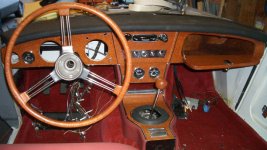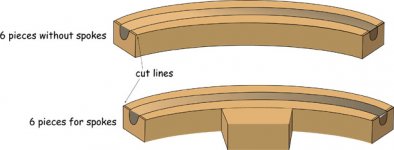Greetings all!
I am preparing to build a new dash for my series III Sunbeam Rapier. The original dash was a veneered plywood which is now beyond salvaging as the plywood has warped and begun to delaminate. I have previously built new dashes using high quality marine grade plywood made with a greater number of layers than the stuff you buy at Home Depot. However, given the shape of the Sunbeam's dash and my lack of work space, I was wondering if a piece of quality hardwood could be used instead of plywood? If so, what type of wood would work best? Oak, Birch, Walnut, etc? Will verneers work better on one type of hardwood than on another? I'm thinking that a fine grain wood would be better than a coarse grain in terms of being able to make fine cuts. And what about warping? Will a hardwood be able to withstand the temperature extremes as well as a plywood?
Any and all suggestions and thoughts on the subject are welcome.
Thanks,
Tony Fontaine
I am preparing to build a new dash for my series III Sunbeam Rapier. The original dash was a veneered plywood which is now beyond salvaging as the plywood has warped and begun to delaminate. I have previously built new dashes using high quality marine grade plywood made with a greater number of layers than the stuff you buy at Home Depot. However, given the shape of the Sunbeam's dash and my lack of work space, I was wondering if a piece of quality hardwood could be used instead of plywood? If so, what type of wood would work best? Oak, Birch, Walnut, etc? Will verneers work better on one type of hardwood than on another? I'm thinking that a fine grain wood would be better than a coarse grain in terms of being able to make fine cuts. And what about warping? Will a hardwood be able to withstand the temperature extremes as well as a plywood?
Any and all suggestions and thoughts on the subject are welcome.
Thanks,
Tony Fontaine

 Hi Guest!
Hi Guest!

 smilie in place of the real @
smilie in place of the real @
 Pretty Please - add it to our Events forum(s) and add to the calendar! >>
Pretty Please - add it to our Events forum(s) and add to the calendar! >> 



